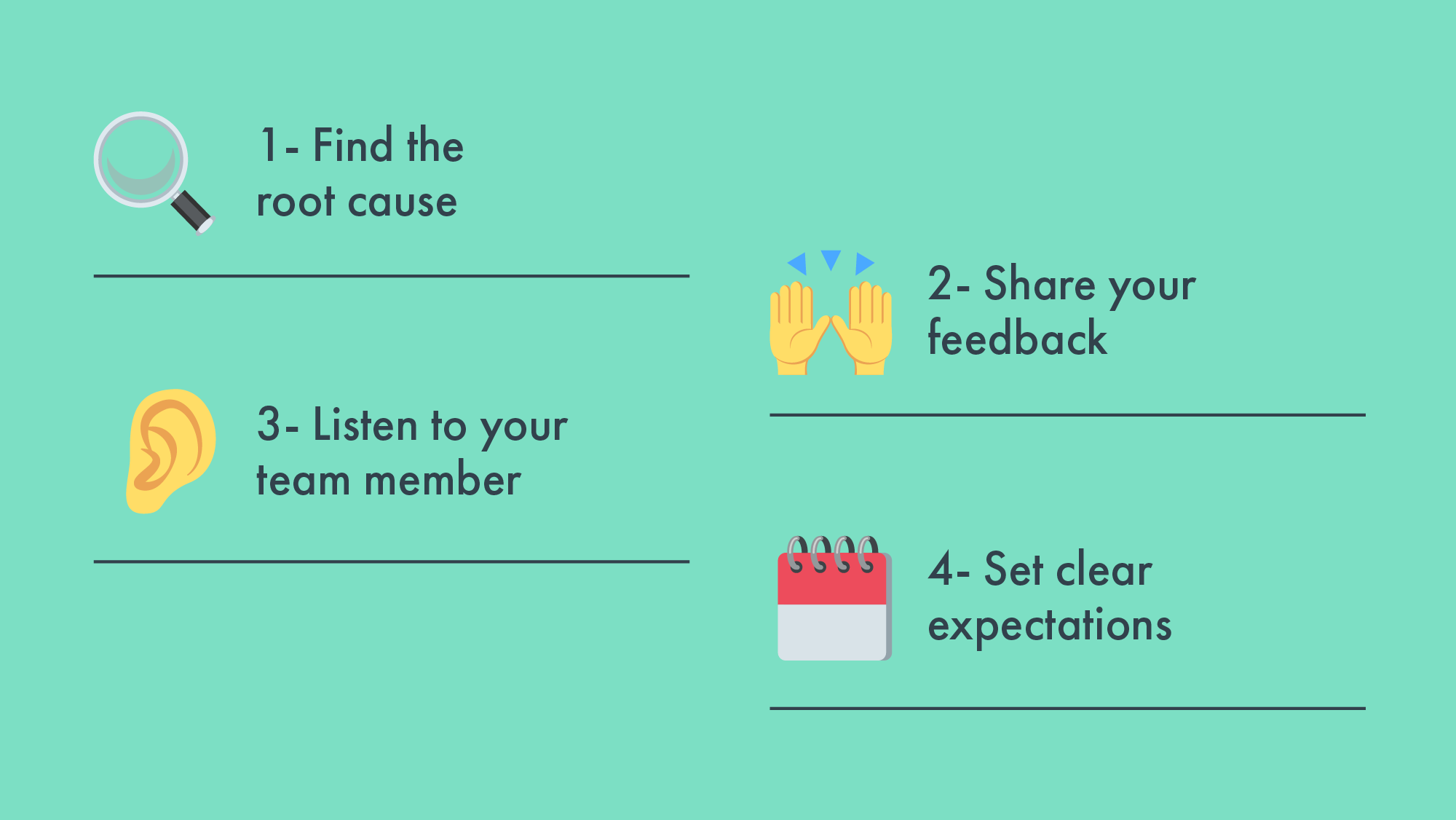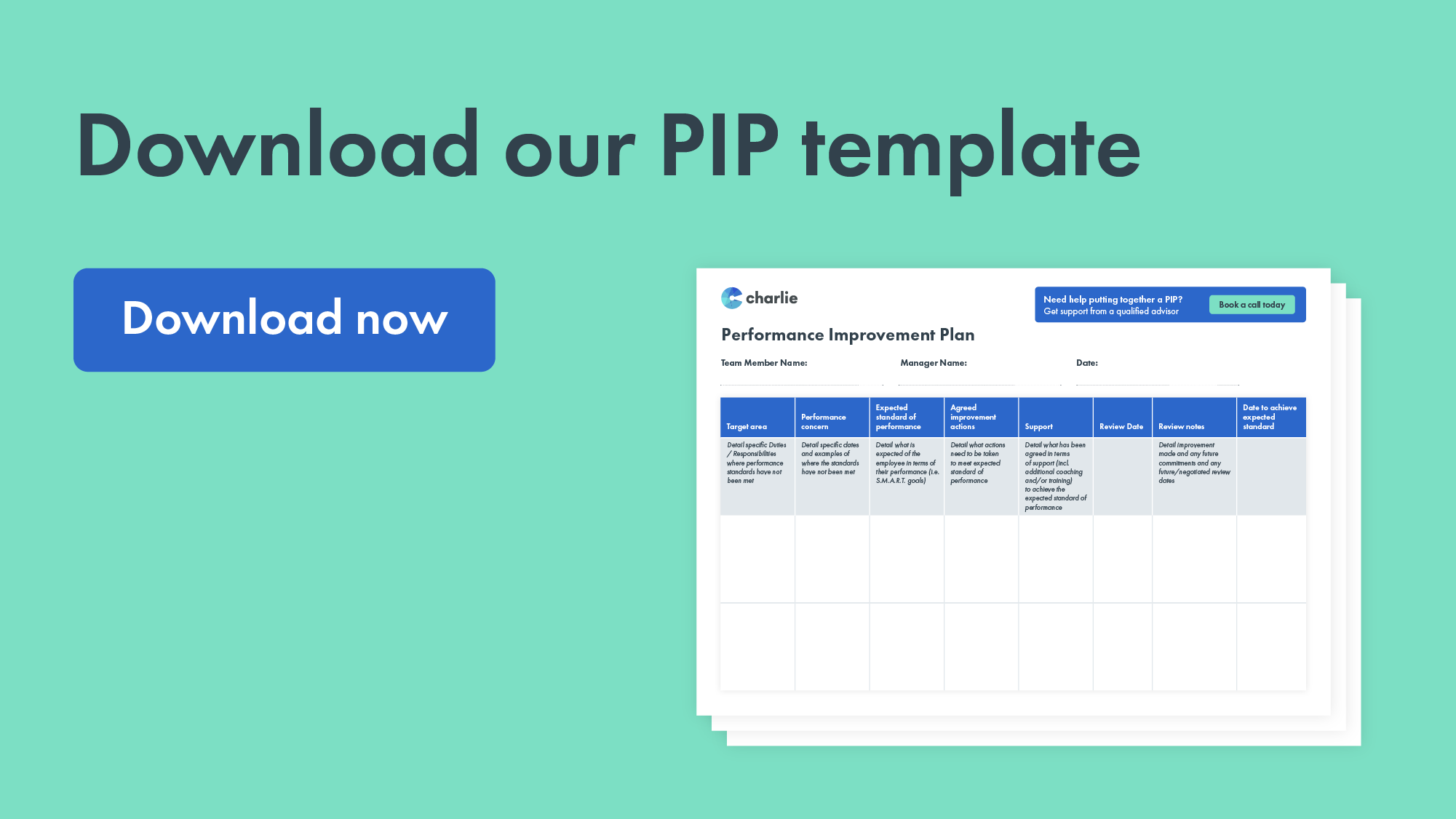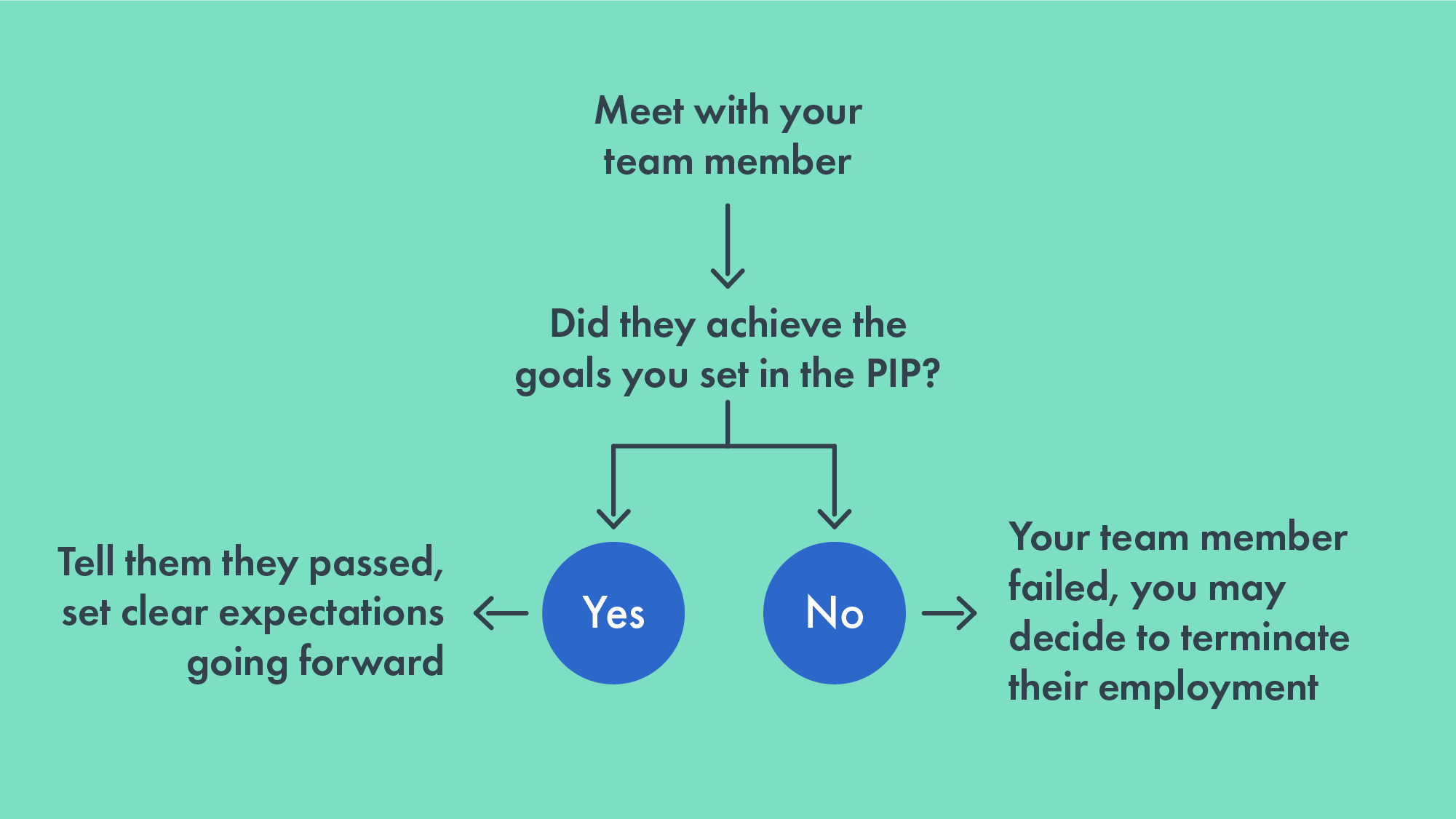Performance Improvement Plans — the complete guide (with free template)

Performance improvement plans are exactly the sort of tools you hope you’ll never need to use. However, it’s likely that at some point in your career you’ll have to deal with a team member not performing at the level they’re expected to.
In this guide, I’ll share some of the learnings I had from advising small companies over the last 10 years on how to address underperformance, with a specific focus on performance improvement plans — when you need them, how to put one together and what to expect as a result.
What is a performance improvement plan?
A Performance Improvement Plan (PIP) is a formal document that you can use to list an employee’s performance issues as well as the goals they have to achieve to meet your performance standards.
It usually includes an action plan and a deadline by which the team member is expected to have met all the improvement goals. If the goals aren’t met, this will likely result in a formal action or dismissal.
When should you use a performance improvement plan?
Putting someone on a performance improvement plan should really only be your last resort, assuming other, more informal methods didn’t help them get back on track.
It is only after observing that a team member is not acting on your feedback that you should go through a formal PIP process.
To start with, does the employee in question know that they’re underperforming?
At Charlie, we believe in continuous performance management, a process where feedback is exchanged not just during yearly performance reviews, but - literally - all the time.
It is very important that, before putting someone on a PIP, you have an honest conversation with them about their performance. This doesn’t have to be a formal meeting, you can just use one of your regular check-ins.
Be clear and communicate openly what it is that you are concerned about. This avoids any nasty shocks and helps to send the message that you are actually looking to help them improve their professional performance.
In this meeting, try to understand the root cause of underperformance: is your employee going through a difficult time or having personal issues? Are they struggling with time management or an increase in workload? Asking these questions will already give you an idea of the possible solutions. (Maybe have a look at how mental health can impact performance in our blog post)
Make sure you do have this conversation as soon as you notice their performance is not up to scratch. Don’t wait for the situation to go out of hand — performance issues tend to get bigger the more you ignore them. It is also your responsibility to be as open as possible with your struggling employees: after all, they rely on your feedback to grow and improve.

Now that you’ve shared your feedback, you should allow some time for your employee to act on it. While this is not a formal review process, you should still be specific with them about what you expect:
- What type of improvement are you wishing to see? Set an attainable target and use measurable metrics where possible to ensure your evaluation is not biased.
- When will you check-in with them again to see if they managed to achieve that improvement? Set a specific timeline for them to work on your feedback.
Then, the time comes to evaluate your team member’s performance again. Have they managed to improve their performance?
- If yes, well done! Keep on having frequent and regular feedback conversations with them.
- If not, this is unfortunately the time to put them on an employee performance improvement plan.
If you’re looking to improve feedback and performance conversations at your business, our HR Advice service may help. Get a qualified advisor to train your team on how to have effective one-to-ones.

How to write a performance improvement plan (with template)
If, despite your feedback and support, your team member was not able to improve their performance, it is time to put them on a performance improvement plan.
Usually, the person responsible for drafting the PIP is the employee’s manager.
So, what should a performance improvement plan include? A PIP should always include:
- A list of duties or responsibilities where performance standards have not been met
- Dates and examples of when these standards have not been met
- Details of what is expected of the employee in terms of performance
- A detailed description of actions that need to be taken to meet the right standards of performance
- Information about what support you’re giving your team member to help them reach and maintain that standard (for example, additional training or mentoring)
- A deadline by which these improvements will need to happen, plus at least one date for a check-in halfway through
Get the full Performance Improvement Plan Template that we use at Charlie by clicking here below.

Need help drafting a PIP for an employee?
Our HR Advisors can help you write a personal improvement plan customised to your company and the specific underperformance issue you’re facing. This includes:
- Advising you on how to write your PIP and get everyone involved to agree to it.
- Identifying relevant performance goals for your team members.
- Choosing a timeframe for their performance improvement plan, including how often you will check on your employee’s progress.
- Expert guidance on how to assess your employee’s performance throughout and at the end of their PIP.If your employee’s performance hasn’t improved at the end of their PIP, we’ll help you go through a fair and compliant disciplinary action, or any disciplinary procedures needed.

How to conduct a performance improvement plan meeting
After drafting your PIP, you must discuss it with the team member in question in a meeting:
- Let them know why you are putting them on a performance improvement plan (for example because they were not able to act on your previous feedback).
- Be supportive: tell them you are there to help them meet the goals in the PIP.
- Go through every element of the plan with them and give them the opportunity to ask questions or challenge any statements about their past performance. Of course, the final word is yours, but you should listen to what they have to say.
- Get their input on what actions they will have to take in order to get back to the level of performance expected of them.
- Ensure the expectations set in the PIP are clear as well as what they need to do to meet them.
- Make it clear that this is a formal process to be taken seriously: it is important they demonstrate that they can step up their performance.
These are always hard conversations to have, but it’s important you are as transparent as possible with your team members. They need to understand what is going on and what is expected of them in order to have a chance of passing their PIP.
You will need to have another performance improvement plan meeting at the end of the PIP period, when you will discuss whether the team member managed to meet their targets or not. We’re sharing more information on this below.
Maybe you can get some inspiration from our performance review questions to help you along the way.
How long does a performance improvement plan last?
How long a performance improvement plan lasts depends on how much time the employee will need to meet the performance improvement targets set in their PIP.
When setting your deadline, make sure it’s realistic and that you give your team member enough time to be able to meet the targets. On the other hand, keep the deadline in line with your general expectations in terms of performance at your company. You’ll want it to be doable, but also not too easy — your standards should remain high as a way to respect other members in your team who are high performers.
One thing you can do to support the person on the PIP is to set up a couple of checkpoint meetings before the deadline to check on their progress and help them with any blockers.
What happens if your employee fails a performance improvement plan?
At the end of the performance improvement plan period, you will meet again with your team member to discuss their performance and whether they achieved the goals you set in the PIP.
If the answer is yes, then you can tell them they have passed their PIP. Make sure you set clear expectations about what performance standard will be expected from them going forward, and keep giving them regular feedback.
If the answer is no, and your team member failed to meet the expectations outlined in the plan, you may decide to terminate their employment (check out our guide on how to fire someone like a grownup).
These decisions are always hard: you have to take into account your employee’s wellbeing but also what is right for your business. On top of that, you need to ensure you stay compliant.

If you ever need expert advice on whether you should dismiss an employee, our qualified HR advisors can help. They can tell you how to stay on the right side of the law, while also protecting your business and treating your team fairly.
Book an intro call to find out more about how our HR professionals can help you with this type of employee issues.
How can you prevent performance issues from happening again?
In my experience working with hundreds of small businesses, underperformance is very often caused by problems in the way companies manage their performance processes.
We’ve already talked about feedback and continuous performance management: if you don’t assess your team’s performance frequently and in a continuous way, you leave a lot of space for underperformance to become a problem.
That’s why I always recommend companies, no matter how small, to come up with a performance review process to spot and address issues as soon as they come up.
You can start with something simple and build your performance management process in steps:
- Codify your one to one meetings between managers and direct reports: how often do they happen? What do they cover?
- Introduce Personal Development Plans to define what is expected of each team member and what skills they’ll work on developing
- Get a performance review software to automate as many repetitive tasks as possible
If you’re worried about the amount of admin involved in setting up effective performance reviews, you may find Charlie’s HR software useful.
With Charlie’s Performance Reviews, you can pick the right review format for you from our ready-made templates and roll out recurring reviews to your team in just one click.
And if you want to learn more about what is performance management, have a look at all of our resources:


